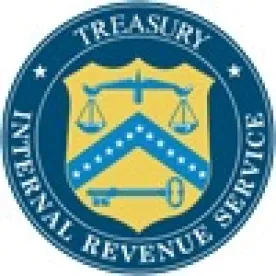The Internal Revenue Service (IRS) has drafted new rules relating to the filing of informal refund claims during an examination. An informal refund claim is a request for a refund by the taxpayer either in a written form, but not using a standard form (i.e., Forms 843 or 1120X), or by some other means as long as the required claim elements are identified. Examples of informal claims are a signed Form 870 or Form 4549 for an over-assessment or a letter sent by the taxpayer requesting a refund. See Internal Revenue Manual 4.10.8.9 [08-11-2006].
In a new draft Publication 5125 (dated 7-2014), the Large Business and International (LB&I) branch of the IRS has proposed to limit the use of informal refund claims to the 30-day period after the audit opening conference. The IRS explained the reasons for the proposed new rule as follows:
To deploy our resources efficiently, all claims for refund should be brought to the attention of the exam team as soon as the taxpayer becomes aware of any potential overpayments of tax. LB&I will only accept informal claims that are provided to the exam team within 30 days of the opening conference. After the 30-day period, claims for refund must be filed using either Form 1120X or Form 843 with supporting documentation. Claims filed after the 30-day window create resource challenges and may result in unnecessary refund litigation which reasonably can be avoided if taxpayers act in a timely fashion.
Previously, LB&I’s examination policy merely contemplated that taxpayers agree to notify the exam team about “any informal or formal claims affecting the years under audit as soon as possible in the audit.” See Internal Revenue Manual 4.46.3.2.3.2 [09-04-2013].
LB&I’s New Policy May Slow Down Audits
The new draft publication also discusses LB&I’s new Informal Dispute Resolution (IDR) process. (View prior coverage here.) The modifications to the informal claim procedures, like the new IDR process, appear to be another attempt to blame audit delays on taxpayers and to introduce unnecessary additional burdens on taxpayers. Like the new IDR procedures, however, it is not clear that the new claims rules will achieve the desired efficiency results.
The proposed new rules are a departure from the fluid process of registering refund claims and adjustments during the examination. It has been a longstanding practice that during an examination of large taxpayers the exam team would readily accept informal refund claims during the audit. This obviated the need for taxpayers to file formal refund claims by amending their returns—particularly because running new computational adjustments could be a waste of time if there are other changes to the return as part of the audit.
Moreover, if an informal claim was rejected during the examination, taxpayers had the option of availing themselves of alternative dispute resolution options, including traditional appeals. It is not clear how claims filed after the 30-day window “may result in unnecessary refund litigation.”
LB&I’s proposed new informal refund claim policy would infuse additional layers of bureaucracy into a process that on average already took several years to complete for large and complicated audits. Worse yet, in situations where taxpayers would have a net deficiency, if these refund claims are viewed as “stand alone,” the requirement to file a formal refund claim might precipitate review by the Joint Committee on Taxation for refund claims exceeding $2 million, a process that could introduce additional delay. Arguably the IRS’s new policy will force taxpayers to file a formal claim so that there is a brighter line to try to impose a penalty under Code § 6676 – Erroneous claim for refund or credit.
Note that nothing in the draft publication prohibits taxpayers from filing claims for refund, and taxpayers are permitted to do so as long as the statute of limitations is open.




 />i
/>i
